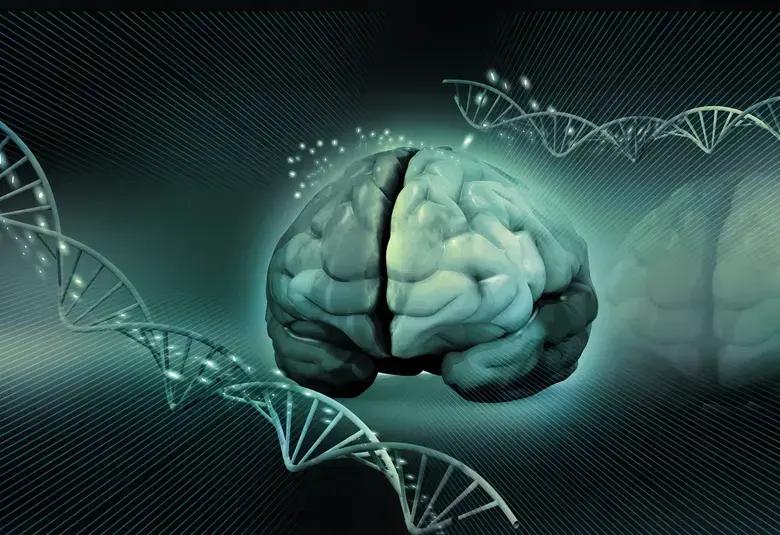Tremor is defined as involuntary rhythmic oscillatory movements of a body part produced by alternating or synchronous contractions of reciprocal agonist and antagonist muscles. It is the most common movement disorder that neurologists encounter in clinical practice (1-3). According to the 2018 Consensus Statement from the Task Force on Tremor of the International Parkinson and Movement Disorders Society, tremor is currently classified along 2 axes: clinical features that determine tremor syndromes in axis 1, and underlying etiology in axis 2 (1).
The first step in the evaluation of tremor is to identify the tremulous movement and exclude tremor mimics including myoclonus (4). Tremor is basically a rhythmic movement with oscillation, referring to a back-and-forth movement around the joint while myoclonus is usually exhibited as a sudden, jerky movement which is not typically regular or rhythmic (4, 5).
The second step is to classify the tremor syndrome based on the characteristics of tremor from historical clues and focused examination (Axis 1). Careful tremor examinations involve the assessment of tremor in different conditions (rest, action or mixed, position or task-specific), distribution of tremor (upper limb, lower limb, head, jaw), positive signs for functional tremor (FT) if suspected (distractibility, entrainment, co-contraction), and associated neurological signs including parkinsonism, dystonic posture, cerebellar/brainstem signs, neuropathy, and cognitive impairment (6, 7). A significant feature in this step is to determine any distinct feature of a specific isolated or combined tremor syndrome with associated neurological symptoms. A diagnosis is based on the clinical characteristics of each tremor syndrome and pattern recognition (8). Tremor diagnosis can be changed with time if additional signs develop (9).
Rest tremor is a common tremor situation in clinical practice. While most people might think of only Parkinson’s disease (PD) tremor, there are tremor syndromes that can present as a rest tremor with or without action tremor (Fig 1).
With parkinsonism
- Parkinson’s disease (PD): Tremor in PD usually occurs unilaterally or asymmetrically at the upper limb predominantly at rest with a frequency of 4-7 Hz. It occurs in about 65% of patients with Parkinson’s disease (10-12). Pill-rolling tremor with flexion beyond the extension of fingers and pronation-supination of the wrist and forearm are the typical characteristics of PD tremor (13). Suppression of rest tremor at the onset of voluntary movements is very specific to PD tremor (13, 14), particularly when it accompanies re-emergent postural tremor (15, 16). The presence of resting tremor of jaw, chin, tongue, unilateral leg (thigh abduction/adduction or flexion/extension) or foot (dorsiflexion/plantarflexion) together with unilateral upper limb rest tremor is suggestive of PD.
- Atypical parkinsonian syndromes and genetic movement disorders: Rest tremor is less frequent in atypical parkinsonian syndromes. It was noted in 39% of multiple system atrophy (MSA) and only 8-10% observed as pill-rolling tremor (17, 18). Tremor in MSA-Parkinsonism subtype usually presents with jerky postural tremor. Unilateral/asymmetrical irregular jerky rest and action tremor with dystonic posture of the upper limb was found in 10-50% of patients with corticobasal syndrome (CBS) (19). While tremor-at-rest is uncommonly described in progressive supranuclear palsy (PSP), the parkinsonism subtype (PSP-P) of rest tremor has been reported to occur in about 40% of patients as an initial presentation indistinguishable from PD (20, 21). Other genetic disorders that may present with rest tremor include Wilson’s disease who would present with early onset dystonia-parkinsonism with neuropsychiatric disorders.
- Drug-induced (tardive) tremor: Drugs containing a blocking effect on the dopamine pathway such as typical anti-psychotic agent would cause rest tremor resembling PD. This type of tremor usually occurs symmetrically and is accompanied by fine amplitude high frequency postural tremor and symmetrical parkinsonism (22).
With other neurological signs
- Dystonic tremor (DT): Rest tremor is prevalent in dystonia is characterized by old age of onset and dystonic arm involvement (23, 24). Tremor in dystonia is often unilateral or asymmetrical, irregular, and jerky with prominent dystonia (25). Thumb extension tremor, rather than pill-rolling tremor, asymmetrical postural tremor without re-emergent pattern, and kinetic tremor are more suggestive of DT (23). Additional dystonic postures and parkinsonian signs are important clues to distinguish between PD and DT.
- Holmes tremor (HT): HT is usually irregular and jerk at a slow frequency. HT occurs at rest with higher amplitude at postural holding and kinetic movements with intentional components (26). HT mostly occurs unilaterally in upper limbs. Examinations should always look for structural lesions in the thalamus, midbrains, and cerebellum as a part of the Guillain-Mollaret triangle (26-28).
Without other neurological signs (Isolated tremor at rest)
- ET with rest tremor: Rest tremor may be present at unilateral upper limb in essential tremor (ET) but should not be anatomically separated from action tremor with less severity compared to action component (29, 30). Rest tremor in ET is often revealed at the flexion and extension of the wrist which is different from PD tremor and often is associated with female patients, longer disease duration and head tremor (29).
- Functional tremor (FT): FT may present as a combined rest tremor and action tremor with similar amplitude but variable tremor frequency, axis and distribution (31). The important clues from the history include sudden onset and a waxing and waning course with spontaneous remission. FT is not a disease of exclusion but should be ruled in with phenotype specific signs such as distractibility and entrainment. A combination of a suppression of tremor with mental or motor tasks (distractibility), a brief pause of tremor with a contralateral quick movement (ballistic movement), entrainment with contralateral tapping with different frequencies, suggestibility of tremor with different stimuli by examiners, and tonic coactivation at tremor onset are essential characteristics in supporting a diagnosis for FT (32).
Conclusion
The most common etiology of rest tremor is still Parkinson’s disease but it can be other tremor syndromes such as dystonic tremor, essential tremor with rest tremor, drug-induced tremor, Holmes tremor and functional tremor depending on the relevant historical clues and associated neurological signs.

Figure 1 : The algorithm for differential diagnosis of rest tremor
MSA- multiple system atrophy, PSP – progressive supranuclear palsy, CBS – corticobasal syndrome, ET - essential tremor, CB – cerebellar, BS – brainstem




